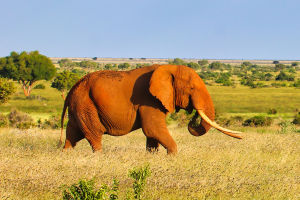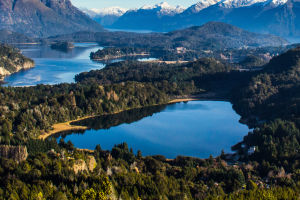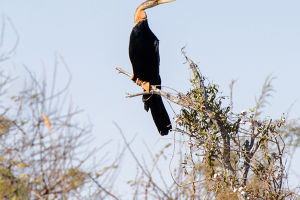The Samoa Islands stand out as an enchanting destination in the heart of the Pacific Ocean, attracting visitors from around the globe.
Renowned for their serene environment and breathtaking natural landscapes, these islands offer a peaceful retreat filled with fascinating activities and cultural experiences.
For Lykkers seeking a getaway that blends relaxation with exploration, the Samoa Islands provide an ideal escape. This guide delivers clear, practical details about the main islands, travel options, costs, and key highlights to plan a memorable trip.
Location and Travel Essentials
Geographical Setting
The Samoa Islands are located in the vast Pacific region, east of Australia. The territory consists of two distinct parts: an independent nation and a separate overseas territory under U.S. administration. Both share stunning natural beauty and offer rich cultural experiences.
Travel Routes and Arrival
Direct flights to the Samoa Islands are not available from most parts of the world. From Honolulu, the capital city of the U.S. state of Hawaii, flights proceed to one of three main airports serving the islands, with the primary airport located near the capital city of the independent territory.
Travel Budget
Flight costs vary significantly depending on the season and booking time, typically ranging from €1,200 to €1,800 round trip from Europe.
Accommodation prices depend on the island and type of lodging, with budget travelers spending around €30-50 per night on basic guesthouses, while mid-range and luxury resorts range from €80 to over €250 per night. A daily budget of €70-120 per person is advisable to cover meals, transportation, and activities.
Climate and Best Time to Visit
Climate Overview
The islands experience a tropical climate, with an average temperature around 27°C throughout the year. Rainfall is frequent but varies by season.
Optimal Visiting Period
The best months for travel are from mid-May to September. During this time, the weather remains mild and pleasant with lower chances of heavy rainfall. The sea temperature stays warm year-round, making outdoor and water-based activities enjoyable.
Periods to Avoid
From November to April, the islands face high humidity and frequent heavy showers, which can affect travel plans. This season also poses a risk of intense tropical storms.
Main Islands to Explore
Upolu
As the principal island of the independent territory, Upolu hosts the capital city, a hub for culture and services. Visitors will find a range of accommodations from comfortable lodges to high-end resorts.
The main airport, serving international and regional flights, is situated here, making it the easiest entry point.
Getting there: Flights land at Faleolo International Airport near the capital.
Average costs: Mid-range hotels from €80; local meals around €10-15; taxi fares vary but budget around €20-30 per day for transport.
Sava'i
The largest island in the independent group, Sava'i is renowned for its lush landscapes and fewer tourists, offering a quieter experience. Services are more limited but sufficient for visitors seeking nature-focused activities. A ferry connects Sava'i with Upolu, taking approximately 1.5 to 2 hours.
Getting there: Regular ferry service from Upolu.
Average costs: Basic lodging starts at €30 per night; food costs similar to Upolu; ferry fare around €10 one-way.
Tutuila
This volcanic island is the main location in the U.S. administered territory and includes the capital city. Tutuila combines natural beauty with urban amenities, including various dining options and accommodation choices from budget to upscale.
Getting there: Accessible by flights from Honolulu and other Pacific hubs.
Average costs: Accommodation ranges from €40 to €150; meals €12-20; local transport is affordable, with taxis and minibuses available.
Ta'u
Part of the U.S. territory, Ta'u is smaller and less populated, appealing to those seeking adventure and authentic island life. It is a favorite for hiking and guided tours. Access is via a small regional airport with limited flights.
Getting there: Flights arrive at Fitiuta Airport, usually from Tutuila.
Average costs: Lodging is limited, around €40-70; tours and excursions vary, so budgeting €50 per day is wise.
Experiences and Key Attractions
Cultural and Local Life
- Old Market of Apia: An immersive place where visitors can explore local crafts (start at ~€5), fresh produce (from ~€2), and the everyday spirit of the island's people.
- Mount Alava and Matafao Peak on Tutuila: Both provide scenic hiking trails with panoramic views for those fond of outdoor activities (guided hikes may cost ~€20–€50 per person).
Waterfalls and Natural Reserves
- Afu Aau Falls on Sava'i: A lush natural site surrounded by thick greenery, ideal for nature lovers.
- Piula Cave Pool on Upolu: A crystal-clear natural pool framed by rugged rocks, perfect for a refreshing dip (~€3–€5).
- Palolo Deep Marine Reserve near the capital on Upolu: A renowned spot for vibrant underwater life, appealing to snorkeling enthusiasts (snorkeling entry fee ~€5–€10, gear rental ~€10–€15 extra).
Planning Your Samoa Islands Adventure
Travelers should prepare for a journey that combines scenic island life with opportunities for hiking, cultural engagement, and relaxation. A daily budget of approximately €70-120 will comfortably cover meals, accommodations, and local activities, depending on preferences. Booking flights and lodging well in advance is recommended, especially during the prime travel season.
In Conclusion
The Samoa Islands represent a remarkable destination filled with natural wonders, welcoming communities, and diverse experiences. For Lykkers aiming to explore a tranquil paradise that offers both adventure and peace, these islands stand as an excellent choice. With proper planning on travel, costs, and activities, a visit here promises lasting memories and a refreshing escape from the everyday hustle.


